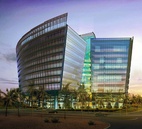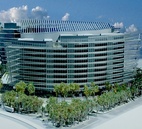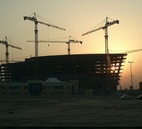All Rights Reserved - Alamiahco.net - 2025
Ministry of Education, Kuwait

Kuwait is a small country situated in the Persian Gulf. It is one of the high-income countries with a GDP per capita of above $24,000. Oil exports account for nearly half of Kuwait’s national income and about 80% of government revenues. Between 1975 and 1985, the proportion of all working nationals employed in the public sector, including oil, rose from 76 percent to 92 percent. The government of Kuwait is now looking for alternative ways to stimulate employment and the generation of income. With this in mind, it is keen to diversify and improve the skills of its labor force; hence the high priority given to the reform of education at all levels.
At the beginning of the 20th century, there was no formal educational system in place in Kuwait at all. There were a few Quranic schools, known as Al-Katatib, funded by the wealthy private citizens of Kuwait that taught reading, writing and basic arithmetic. In 1912, the Al Mubarakiya School was established as one of Kuwait’s modern educational institutions. It was founded by merchants to train their clerks in commerce, arithmetic and letter-writing skills. In 1921, the Al-Ahmedia school was established, which offered English courses, and soon thereafter, an all-girls school was founded that provided education in Arabic, home economics and Islamic Studies. The government became involved in providing formal education in 1936, and by 1945 there were 17 schools in Kuwait. With the increase in oil production and hence state revenues after World War II, the government began investing huge sums of money into social services, including education. By 1960, there were 45,000 students enrolled in Kuwait's educational system, including 18,000 girls.
In 1965, following the constitution that made education a fundamental right of a citizen, education was made compulsory for children aged between 6 and 14. Since the early 21st century, the Ministry of Education has sought to prepare a general, long-term education strategy, focusing on educational teaching for the years up to 2025. This effort aims to align teaching methodologies with the current needs of an increasingly globalized world. The World Bank is conducting an analytical study to explore the various policy options needed to implement this new strategy.
A National Conference for the Development of Education was held in Kuwait in February 2008, in order to discuss this national strategy further. Other multilateral organizations, such as the OECD, are working towards improving the business environment in Kuwait and providing training for women to promote female entrepreneurship within the country.
The general education system consists of four levels: kindergarten or nursery (lasting for 2 years), primary (lasting for 5 years), intermediate (lasting for 4 years) and secondary (lasting for 3 years). Schooling at primary and intermediate level is compulsory for all students aged 6-14. All the levels of state education, including higher education, are free. There are two main ministries involved in the development of the education sector: the Ministry of Education and the Ministry of Higher Education.
There are about 1,145 schools in Kuwait, at all levels from kindergarten to secondary (2006 figures). Out of this total, 664 are public and 481 are private schools. There are 6 districts in Kuwait and the highest number of schools are in the Al-Ahmadi district, which has 152 schools (representing 23 percent of all public schools), while Al-Jahra has 85 schools (representing 12 percent of all public schools), which is the lowest number of schools by district.
Alamiah Building Company has carried out the various projects for this prestigious client, few of which are listed hereunder:-
Completed Projects
Production, supply and installation of precast concrete works for schools in various locations in Kuwait
Ongoing Projects
Design, manufacture, testing, delivery, installation and maintenance of structural precast & precast pre-stressed beams as well as post tensioning works for cast in situ beams, for the Ministry of Education Headquarters at South Surra, Kuwait, worth KD 77,765.000
Production, supply and installation of precast concrete boundary wall elements (column with footings and wall panels) for External Boundary Walls for Various Public Schools in Al-Jahra area, Kuwait




